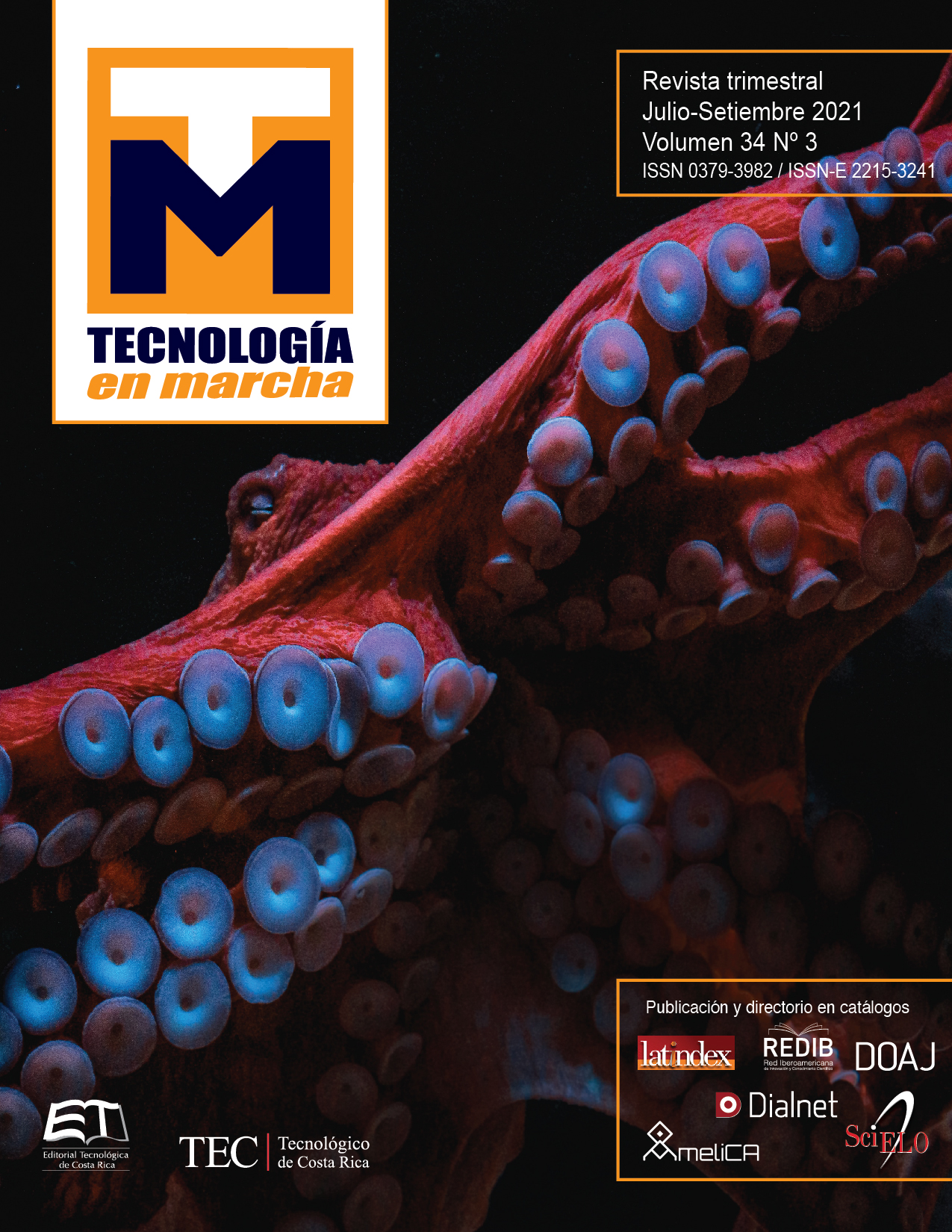Environmental impact assessment of a diary plant in Costa Rica
Main Article Content
Abstract
The Environmental Management (EM), as a functional paradigm of the processes of control and sustainability of planned activities, incorporates the Environmental Impact Assessment (EIA) as an analysis strategy to guarantee an environmentally and sustainable execution of actions in different fields. The dairy industry is listed as an outstanding generator of Environmental Impacts (EIs), which need to be analyzed as a contingency measure for environmental protection. In the present study, the identification, assessment and prioritization of environmental aspects (EAs) and environmental impacts (EIs) of a dairy plant was developed. The identification of the AAs was carried out through field views, interviews with plant officials, analysis sessions with company authorities, application of a checklist, analysis of the production process, interviews with experts in the subject and related bibliographic review. The evaluation, valuation and prioritization of AAs and IAs was carried out through the application of the Environmental Impact Importance Matrix (MIIA), using field criteria compiled during the process of identifying environmental aspects. Nine AAs and four IAs were identified; being the AA called water consumption the most critical for the environment, due to high consumption and consequent depletion of the water resource. The three main AAs of a negative nature to the environment were: water consumption, external power supply and odor emissions; with environmental impact values of -87, -65 and -52, respectively.
Article Details

This work is licensed under a Creative Commons Attribution-NonCommercial-NoDerivatives 4.0 International License.
Los autores conservan los derechos de autor y ceden a la revista el derecho de la primera publicación y pueda editarlo, reproducirlo, distribuirlo, exhibirlo y comunicarlo en el país y en el extranjero mediante medios impresos y electrónicos. Asimismo, asumen el compromiso sobre cualquier litigio o reclamación relacionada con derechos de propiedad intelectual, exonerando de responsabilidad a la Editorial Tecnológica de Costa Rica. Además, se establece que los autores pueden realizar otros acuerdos contractuales independientes y adicionales para la distribución no exclusiva de la versión del artículo publicado en esta revista (p. ej., incluirlo en un repositorio institucional o publicarlo en un libro) siempre que indiquen claramente que el trabajo se publicó por primera vez en esta revista.
References
[2] J. Toro, O. Duarte, I. Requena, and M. Zamorano, “Determining Vulnerability Importance in Environmental Impact Assessment. The case of Colombia,” Environ. Impact Assess. Rev., vol. 32, no. 1, pp. 107–117, Jan. 2012.
[3] F. Wiengarten and M. Pagell, “The importance of quality management for the success of environmental management initiatives,” Int. J. Prod. Econ., vol. 140, no. 1, pp. 407–415, Nov. 2012.
[4] I. Djekic, J. Miocinovic, I. Tomasevic, N. Smigic, and N. Tomic, “Environmental life-cycle assessment of various dairy products,” J. Clean. Prod., vol. 68, pp. 64–72, Apr. 2014.
[5] F. X. Milani, D. Nutter, and G. Thoma, “Invited review: Environmental impacts of dairy processing and products: A review,” Journal of Dairy Science, vol. 94, no. 9. pp. 4243–4254, Sep-2011.
[6] M. Herva, A. Franco, E. F. Carrasco, and E. Roca, “Review of corporate environmental indicators,” J. Clean. Prod., vol. 19, no. 15, pp. 1687–1699, 2011.
[7] “Decreto Ejecutivo N° 34375-MINAE,” Procuraduría General de la República, 2007.
[8] O. L. Hernandez et al., “Humic substances from vermicompost enhance urban lettuce production,” Agron. Sustain. Dev., vol. 35, no. 1, pp. 225–232, 2014.
[9] F. Carvalho, A. R. Prazeres, and J. Rivas, “Cheese whey wastewater: Characterization and treatment,” Sci. Total Environ., vol. 445–446, pp. 385–396, 2013.
[10] J. S. S. Yadav, S. Yan, S. Pilli, L. Kumar, R. D. Tyagi, and R. Y. Surampalli, “Cheese whey: A potential resource to transform into bioprotein, functional/nutritional proteins and bioactive peptides,” Biotechnol. Adv., vol. 33, no. 6, pp. 756–774, 2015.
[11] S. Khoshnevis Yazdi and B. Shakouri, “Renewable energy, nonrenewable energy consumption, and economic growth,” Energy Sources, Part B Econ. Plan. Policy, vol. 12, no. 12, pp. 1038–1045, 2017.
[12] A. Fredeen, S. Juurlink, M. Main, T. Astatkie, and R. C. Martin, “Implications of dairy systems on enteric methane and postulated effects on total greenhouse gas emission,” Animal, vol. 7, no. 11, pp. 1875–1883, 2013.

